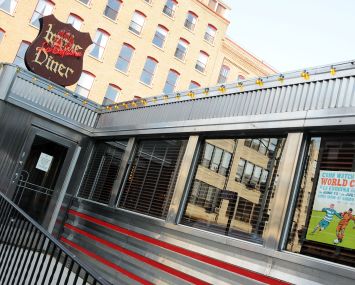U of Maryland Finalizes Plans for College Park Campus Makeover
Plans include upgraded facilities, bike trails and improved connectivity
By Keith Loria January 10, 2024 1:08 pm
reprints
Cooper Robertson, a New York-based architecture and urban design firm, has finalized plans for new campus facilities for the University of Maryland in College Park, Md.
The plan establishes a continuing framework to guide strategic growth and development across campus.
It includes retrofits of more than a dozen existing campus buildings to improve space usage and overall building performance. This will entail constructing a new academic and research facility, adding a campus-wide “Innovation Walk,” and creating a five-mile walking/biking Wellness Loop.
The Innovation Walk would be a corridor with mixed-use development that supports growing the university research enterprise and strategic partnerships.
Cooper Robertson was selected by UMD to develop this plan in 2022, after a competitive RFP process.
“Campus planning is one of our firm’s long-standing areas of expertise, and we’ve led master-planning efforts at colleges and universities across the country,” Mike Aziz, a partner at Cooper Robertson partner, told Commercial Observer. “For instance, we’ve recently completed a long-range plan for the George Washington University nearby and have deep experience in the Baltimore-Washington area with John Hopkins, Georgetown, George Mason and others.”
The plan comes after 18 months of community engagement, which collected suggestions from more than 1,000 students, faculty, staff and community stakeholders.
The finalized plan, which was released Tuesday, includes plans to upgrade existing facilities; integrate capital improvements with sustainability goals, such as achieving net-zero carbon emissions by 2025; improve multimodal transit circulation; and enhance connectivity between the campus and surrounding communities.
“The main goal has been to formulate a flexible, data-driven and inclusive comprehensive planning framework, and to use that framework as a guide for strategic growth and development on the university’s flagship College Park campus, with the ultimate aim of creating a carbon-neutral urban innovation hub,” Aziz said.
“We’ve identified a number of short- and medium-term project opportunities in our plan, and are in close communication now with the UMD team about beginning implementation,” Aziz said. “The planned opening of five [Metro stations] at the university in 2027 presents a wide range of new development and placemaking opportunities, for example.”
There are also plans to improve roadways on and near campus and to possibly add pedestrian corridors that connect to key campus points and prioritize pedestrian safety and accessibility.
“Our Campus Facilities Plan is more than just a blueprint for development; it’s a commitment to our university’s holistic growth,” Darryll J. Pines, UMD’s president, said in a prepared statement. “This vision, fueled by input from our diverse community, signifies our dedication to creating environments where every student can thrive, learn and lead.”
Keith Loria can be reached at Kloria@commercialobserver.com.


